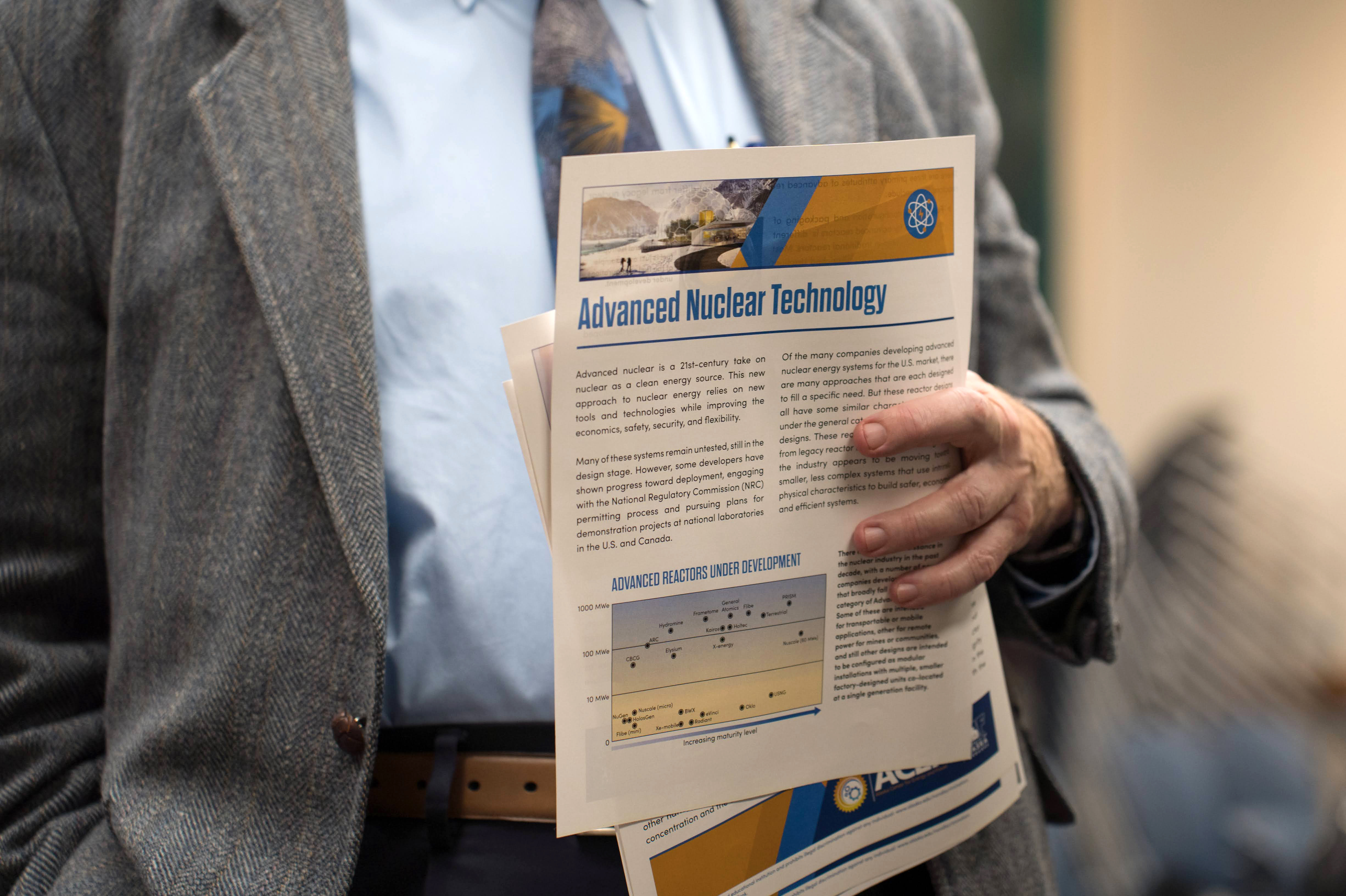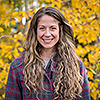Leaning in to Difficult Discussions: Nuclear in Alaska
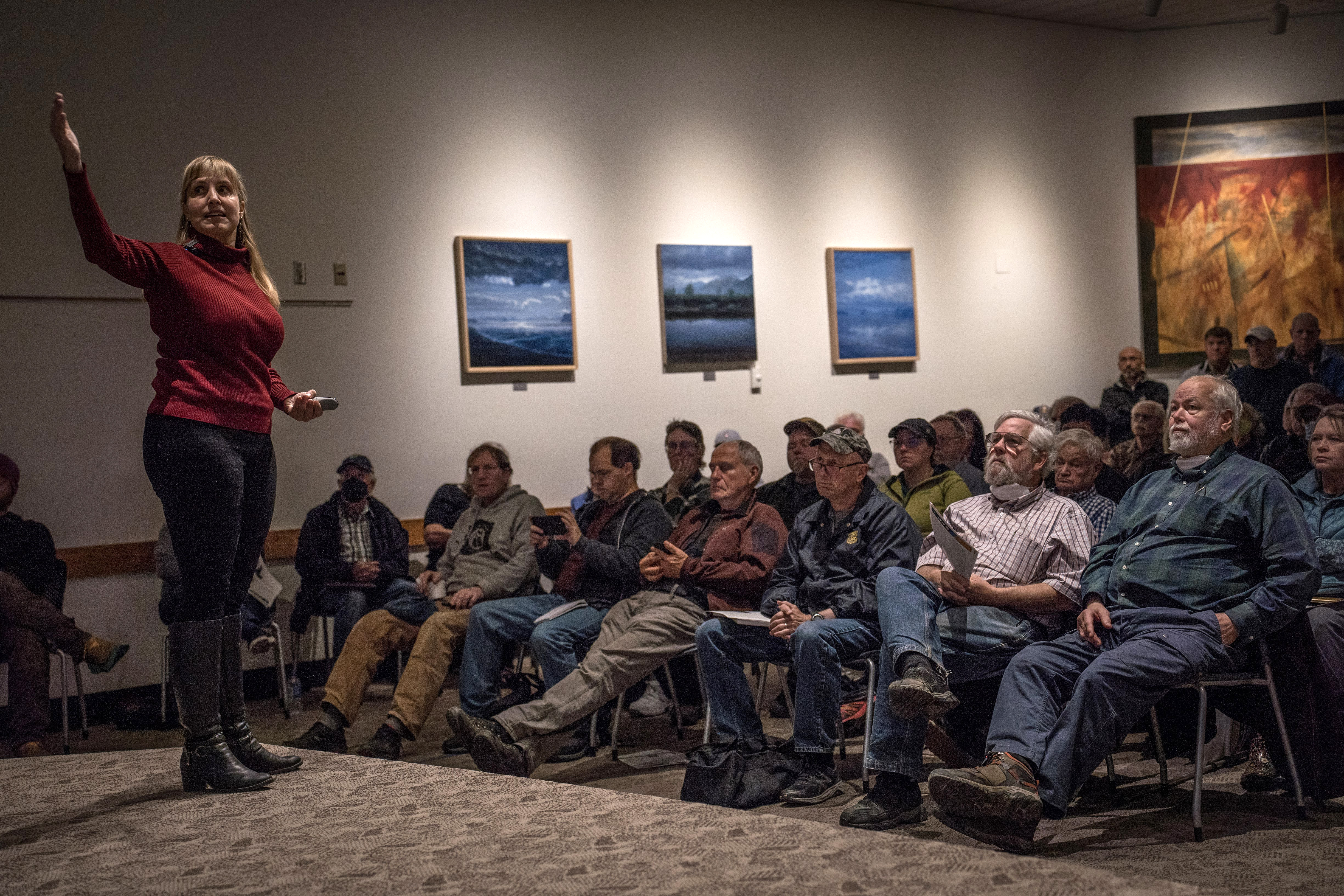
Late last month, Gwen Holdmann, Alaska Center for Energy and Power founder and associate vice chancellor for research, innovation and industry partnerships at the University of Alaska Fairbanks, held a town hall meeting on micronuclear reactor technologies and explored what potential role such technologies could play in Alaska’s energy future. The meeting, held in partnership with the Northern Alaska Environmental Center (NAEC), was enthusiastically attended at the Noel Wein library with standing room only by the time Holdmann began.
The crowd that gathered was not altogether friendly, however. Nuclear, after all, is a highly contentious and controversial technology developed initially as a weapon of war that defined the childhood of an entire generation. The utter devastation of Hiroshima and Nagasaki, the nuclear arms race with the Soviet Union, and fear of atomic fallout were all part of the everyday reality for baby boomers. Combine that with concerns regarding the storage of nuclear waste, the accident at Three-Mile Island and disasters at Chernobyl and later Fukushima, it’s little wonder that the technology faces such backlash.
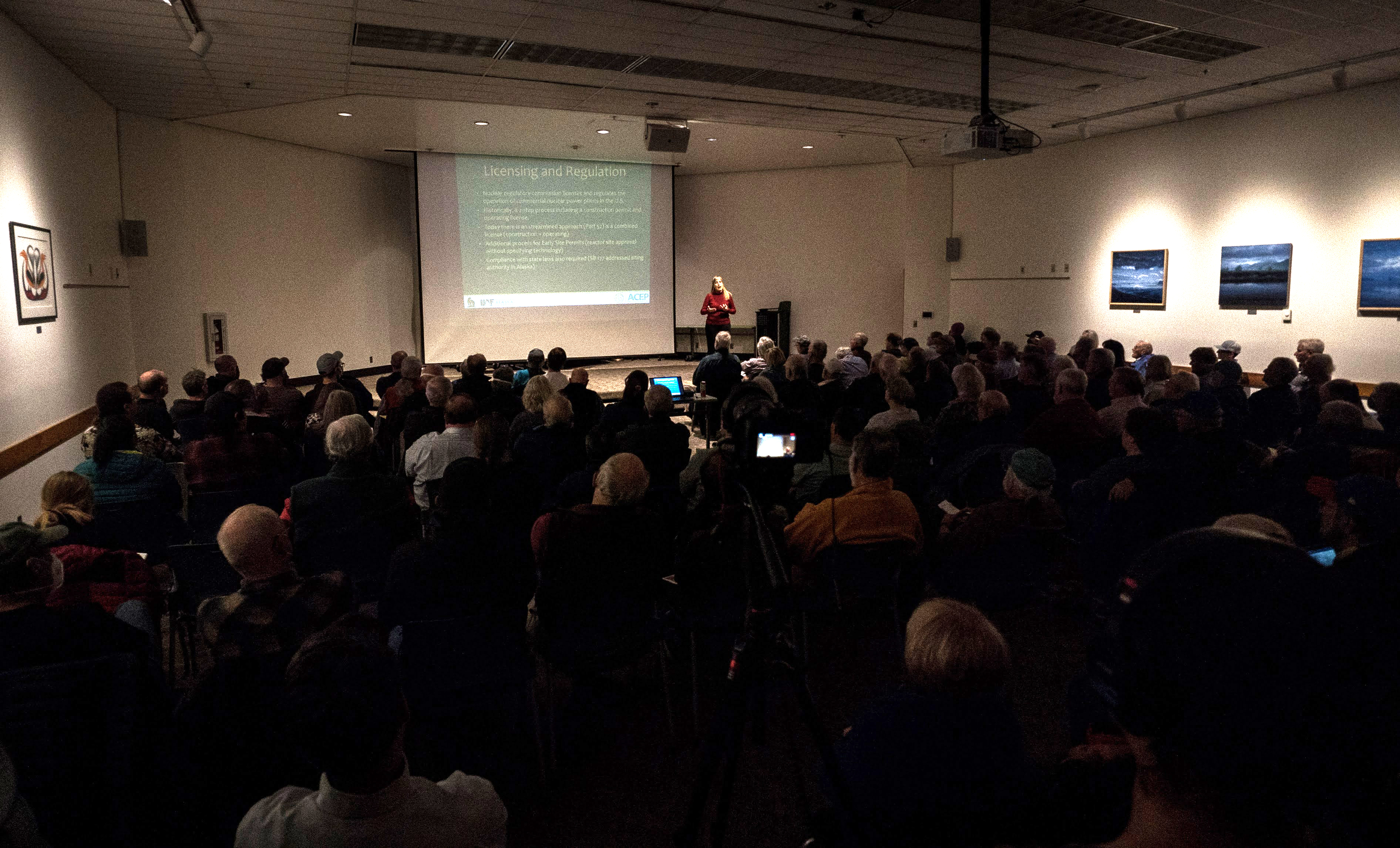
Further, many Alaskans in the room also remembered the weapons testing at Amchitka and of course, the ill-conceived Project Chariot and the role UAF played in both promoting the federal project and punishing faculty members who criticized it. So, one might ask why Holdmann — or ACEP and NAEC more broadly — would hold a public event on such a controversial topic in a vocal community that knows how to show up?
The COVID-19 pandemic emphasized how essential international knowledge sharing and cooperation are in overcoming our shared challenges, but also laid bare the human tendency to think in binaries and the dangers therein. So much of our public discourse has collapsed into inflammatory arguments characterized by black and white thinking. As we return to in-person interactions, how can we facilitate constructive conversations that explore the nuanced — and often difficult — gray areas that live in the middle? How do we create spaces for communities, researchers and decision makers to openly explore and learn from one another in addressing the challenges and opportunities shared across the Arctic? How can we be better conveners?
ACEP is a clearinghouse for energy-related information in Alaska and makes a concerted effort to engage the statewide community through a variety of forums. That includes workshops and organized working groups that are open and free to the public, particularly for emergent technologies such as nuclear power, hydrogen, or carbon capture and sequestration.
“As a research institute at a state university, it is our duty to create space to explore new opportunities for the state, but sometimes this requires challenging conventional wisdom and facilitating difficult discussions,” said Holdmann. “We have been careful not to sign non-disclosure agreements with any microreactor developers precisely because we are dedicated to ensuring our research and the insights we gain can be freely shared with everyone. Our interests align squarely with Alaska’s communities, industries and residents.”
Nuclear power production in the U.S. accounts for nearly 20% of the national annual electricity generation and is starting to show its age. These plants will need to be renovated or replaced. As concerns regarding the impacts of carbon emissions continue to rise, more and more people are exploring a new breed of advanced nuclear reactors that are smaller, safer and more flexible as part of a cleaner future energy portfolio.
Advanced microreactor technologies have not been commercially deployed in the U.S. yet, but Holdmann said it won’t be long. “These technologies are coming,” she said, “and our goal is to prepare our communities and decision makers with the best possible information to assess whether or not they are safe, economical and responsible for Alaska.”
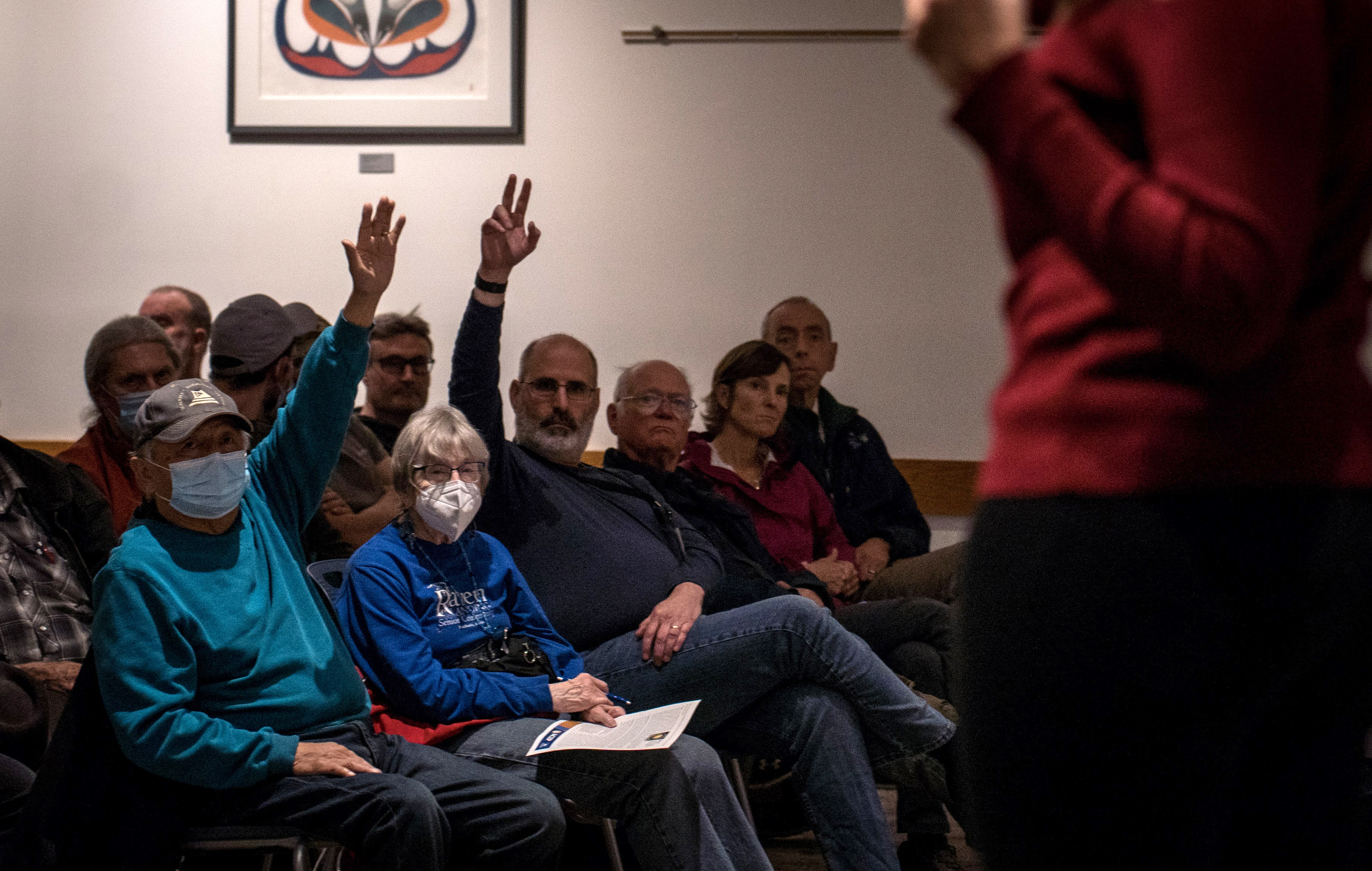
And the world is watching. Interest in microreactors is growing across the circumpolar north where reliable, affordable energy largely decoupled from the global oil market and supply chain would have compounding beneficial effects on the standard of living, particularly for those living in remote communities.
Alaska has the highest energy cost burden of any state. In rural Alaska, for example, home heating accounts for over 70% of home energy costs and low and moderate-income households spend over 42% of their annual incomes on energy, according to Alaska Housing Finance Corporation and Groundswell. Microreactors could potentially meet both the power and heating needs of these communities and create new economic development opportunities consistent with local lifestyles and values that could help improve standards of living throughout the north.
However, a lot of research, assessment, and community discussion lay between now and the commissioning of the first community microreactor in Alaska, should one come to pass. In the meantime, ACEP remains dedicated to its role as convener, bringing together topic and industry experts to openly discuss (and debate) with community members and leaders the merits and criticisms of deploying micronuclear technology in Alaska and elsewhere.
The community conversation reconvenes this Thursday, Oct. 13, at 6 p.m. at the Fairbanks Pipeline Training Center, 3605 Cartwright Court, building C. This week’s panelists are six micronuclear vendors interested in bidding on the Eielson Air Force Base project. The vendors will share information about their technology and offer insights on the potential market for nuclear microreactors in Alaska. A question-and-answer session will follow the presentation.
It is my sincere hope that Fairbanks turns out in droves, leans in to the difficult questions and discussions, explores the gray, engages thoughtfully, and that the evening’s discussions challenge not only the panelists but the audience as well. Our global energy future is uncertain, but the more we convene and engage in the public process of solving our shared challenges, the more locally relevant and successful the solutions will be.
For more information on this week’s event, please visit contact Richelle Johnson at rmjohnson6@alaska.edu or visit http://acep.uaf.edu/nuclear.
